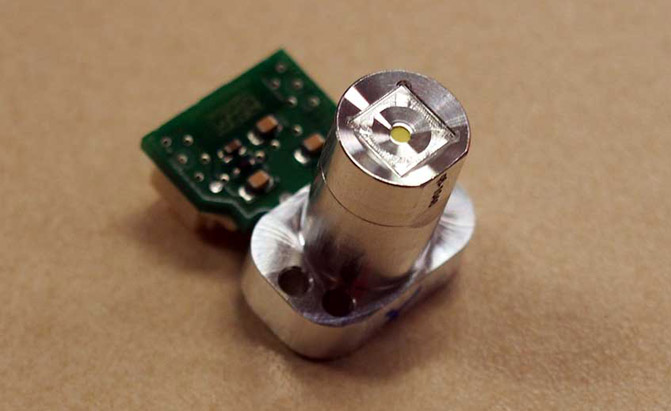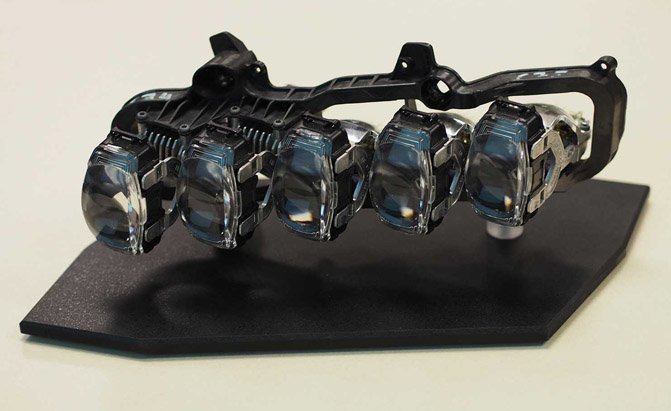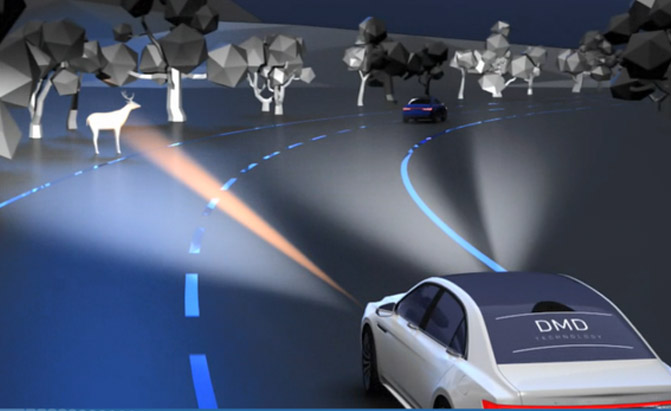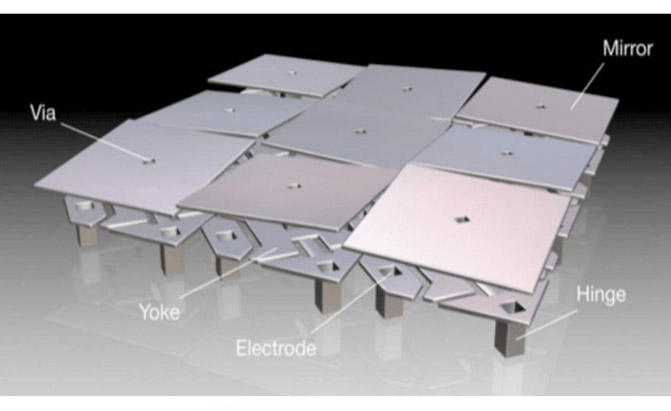From clunky sealed-beam units that dominated vehicle fascias through the 1990s to modern LED-powered lamps, automotive lighting has advanced dramatically over the past two decades. Today, it’s poised to make the next big leap.
Soon, lasers will be guiding us through darkness, offering innumerable benefits over competing technologies. And perhaps their biggest advantage is raw power.
“You can double the light output for your consumer down the road,” said Scott Montesi, director of product development at Varroc Lighting Systems. Laser high-beams can increase maximum visual range from 300 meters to a whopping 600, all without sacrificing electrical efficiency or design simplicity.

Varroc is an independent company with Indian ownership and Czech roots, though not a lot of people seem to have heard of it. Still, according to Montesi, business has been booming of late, with the firm growing between 15 and 18 percent annually for the past five years, something that wasn’t always the case.
Back in 2012, it was spun off from automotive supply giant Visteon, where it never received the attention of funding it needed to thrive. Today, it’s a billion-dollar company that’s headquartered in Plymouth, Michigan, though it has development and production facilities around the world. Stephane Vedie, president and CEO called it “a small gem in the industry.”
SEE ALSO: How the 2017 Chevy Cruze Diesel Gets 52 MPG
Numerous automakers have tapped this firm for its lighting expertise. Varroc’s handiwork can be found in vehicles built by Ford, Bentley, Tesla, Jaguar Land Rover, Lincoln, and FCA, to name a few.
And its customer base will likely continue growing once laser headlamps become as common as steering wheels. In addition to abundant light output, packaging efficiency is another significant real-world upside to this lighting technology. The modules Varroc had on display during an open-house event were small enough to fit in the palm of your hand, weighing perhaps a couple ounces. With such trim dimensions, automotive designers will be able to create ground-breaking new vehicles in future years. Montesi said, “This is a huge advancement for what the styling studios can do.”

Today’s headlamps are usually bulky, multi-chamber assemblies that take up large portions of a car or truck’s front end. Lasers could replace these units with tiny modules that perform better while consuming less electricity. Varroc is poised to launch its laser-lights in Europe around the third-quarter of this year.
Adaptive Driving Beam
In addition to all of this, Varroc is hard at work on several other innovative technologies, one of the most intriguing of which is its Adaptive Driving Beam.
“This would allow you to drive 100 percent of the time with the high beams on,” explained Montesi, all without blinding oncoming motorists. The heart of this system is a lighting array comprised of individually addressable LEDs that can be switched on or off as required. This enables the system to eliminate glare in specific areas of the lighted path. It could use data provided by an onboard camera to know where other traffic was located.

Varroc’s Adaptive Driving Beam should be affordable enough for mass-market implementation. Additionally, it contains no moving parts and taps into camera systems that are already found in many of today’s cars and trucks.
This technology is currently offered in Europe, but it’s not allowed in America, at least not yet. U.S. regulations require that vehicles have both low- and high-beams, something this technically doesn’t offer.
Advanced Safety Functionality
In addition to Adaptive Driving Beam, Varroc is developing several other unique features. Enhancing safety, they’ve created a lighting system that can project graphics right onto the ground.
Augmenting traditional backup lights, they demonstrated special tail-lamp assemblies that can display a set of flashing red arrows on the pavement, helping warn other drivers that your vehicle is reversing.

Montesi said, “We’re in development with that type of system now.” It’s expected to launch in the next six months, though he can’t say which automaker will introduce it.
Beyond this, they’re working on Digital Mircomirror Devices, DMDs for short. These are special reflectors that are comprised of several hundred thousand tiny mirrors, each of which can be individually controlled to either reflect or block light.
SEE ALSO: The 2018 Lexus LS 500 Benchmarked the Mercedes-Benz S-Class
The functionality DMDs could enable is pretty wild. Along with powering Adaptive Driving Beam systems, these tiny reflector arrays could be used to individually highlight roadside obstacles such as deer or pedestrians, display turn-by-turn directions on the ground and more. “With this resolution, we could watch a movie in the car,” said Vedie with a smile, though that’s probably not advisable while in motion.
Historically, lighting has hardly been one of the most exciting areas of the automotive business. “There really hasn’t been a huge shift in technology until recently,” said Montesi. But going forward, Varroc seems to be a vanguard in this segment of the industry. They’re a firm we’ll likely be hearing a lot more about in the coming years as their advanced technology hits the market.



Leave a Reply